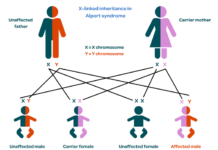SAP SECURITY
SAP Security refers to the measures and practices implemented to protect SAP systems and the data they contain from unauthorized access, misuse, and other security threats. SAP, short for Systems, Applications, and Products in Data Processing, is a widely used enterprise resource planning (ERP) software that manages various business processes within an organization.
SAP Security involves multiple aspects, including:
- Authentication and Authorization: This ensures that only authenticated users have access to the SAP system. User authentication methods such as passwords, single sign-on (SSO), and two-factor authentication (2FA) can be employed. Authorization defines the access rights and privileges for each user, limiting their actions within the system based on their roles and responsibilities.
- User Management: This involves creating and managing user accounts, assigning appropriate roles, and maintaining user records. It’s crucial to regularly review and update user access rights to prevent unauthorized access.
- Role-Based Access Control (RBAC): SAP systems utilize the concept of roles to define sets of privileges and permissions required to perform specific tasks. By assigning roles to users, organizations can enforce the principle of least privilege, granting access only to the necessary functions and data.
- Secure Configuration: Configuring the SAP system securely involves settings related to network protocols, communication channels, transport layer security (TLS/SSL), system parameters, and encryption. Regular system updates and patches should be applied to address known vulnerabilities.
- Audit and Logging: Monitoring and logging user activities within the SAP system is essential for detecting and investigating security incidents. Logs can help identify unauthorized access attempts, potential breaches, or abnormal system behavior. Regular audits should be conducted to ensure compliance with security policies and regulations.
- Data Protection: SAP systems store and process sensitive business data. Implementing data protection mechanisms, such as encryption, data masking, and data anonymization, helps safeguard the confidentiality and integrity of the data.
- Security Monitoring and Incident Response: Employing security monitoring tools and processes allows organizations to detect and respond to security incidents promptly. Intrusion detection systems (IDS), security information and event management (SIEM) systems, and regular vulnerability assessments contribute to proactive security management.
- Training and Awareness: User awareness and training programs are vital to educate employees about security best practices, such as creating strong passwords, recognizing phishing attempts, and following secure procedures while using the SAP system.

Important Links-








































